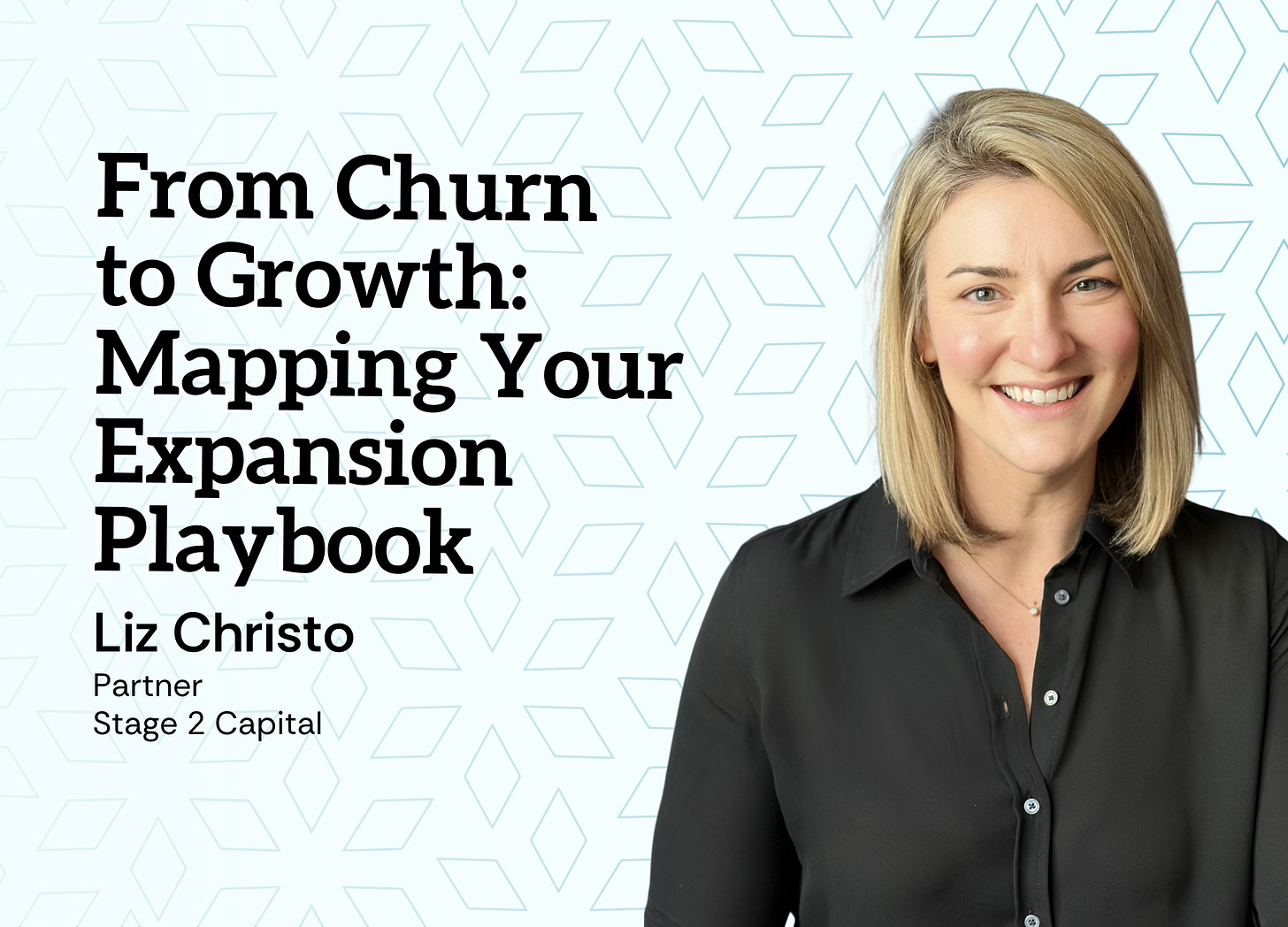From Churn to Growth: Mapping Your Expansion Playbook
How to segment customers, define triggers, and align your GTM team
DEAR STAGE 2: Our topline growth is accelerating, but we’re battling with retention, especially in our SMB segment. We have two modes of upsell today - one is based on the number of units and the other is based on features/packaging. We’re trying to decide how to optimally organize our team. Historically, we’ve had AEs selling new business and CS owning everything post initial-sale. It’s become clear that we need to put more resources into growing our customer base. Should that be a BDR, Account Manager, CS, or AEs? What else should we be thinking about? ~CS SHAKE-UP
DEAR CS SHAKE-UP: When your topline is moving up and to the right, it can feel like you’ve cracked the code. But then…churn hits, and suddenly you are moving mountains to focus on upsell and retention. It’s especially common in the SMB segment, where volume is high, buying cycles are short, and customer attention is scarce.
NRR is a critical metric for fundraising, and for businesses serving SMBs, it’s often lower than your enterprise counterparts. The difference between 99% and 105% is massive when it comes to fundraising and building an enduring business.
I’ve had a few conversations with portfolio companies in the last few weeks on this exact topic and wanted to outline some of the advice I’ve shared on optimizing the expansion motion inside a growing GTM organization.
Understand the Status Quo
Before assigning headcount, get clarity on the existing motion. Inspect your existing customer base as a starting point. What can you learn from customers who have expanded in the past? What happens? Are they coming inbound to support and asking to add a unit or upgrade their plan? Or have all expansions required proactive, outbound effort? The split is key and tells you whether you need to focus on educating your customers and providing upsell paths in the product, or if you need to hire prospectors and closers.
If inbound-heavy → Focus on marketing support and removing friction from self-serve upgrades.
If outbound-heavy → Start building repeatable plays that reps can run against usage triggers or lifecycle moments.
Design Plays based on Expansion Type
You shared 2 distinct upsell paths and it’s likely that they don’t require the same motion or apply to the same segments of your customer base.
Units: This is often easier to determine with firmographic information. How many units (or departments, users, locations, etc…) do they have in total, and how many have you already sold? If this info is available from public sources, get it. If it’s not, make sure you have a process to gather this info during the sales process so that you can build plays to expand wallet share over time. This data gathering is a great starting point to build on. If you see hiring (new users!), new locations (extra unit to sell?), or geo expansion (new location!), you might have an opportunity to increase the total units and grow with your account.
Package Upgrades: This one is more subtle and depends on how you have feature-gated your packages. The focus here needs to be on identifying what triggers an upgrade. We recommend starting with product usage signals and the customer lifecycle (e.g., usage milestones, renewal windows, product adoption patterns), but again, you can bring in external insights to add to this (e.g., new product launch, new hire, company stated goal). Critically, you want to define a max of 3–5 plays for your team to run and do everything you can to simplify and automate that effort. That may mean creating a dashboard or notification to highlight the accounts where one of these triggers has occurred, or even building the first outreach step into the product or customer marketing flow.
Segment Your Customer Base
Before you hire, or even re-org the current team, you need to have a clear view of where you will point resources, which means you need to know where there is opportunity. Not every customer wants, needs, or warrants the same level of interaction.
Use segmentation to define high-potential accounts.
Lean on wallet share scoring to surface expansion-ready customers.
This helps avoid over engineering the org before you know where the juice is worth the squeeze.
The Buyer Journey is the North Star
Put yourself in your buyer’s shoes. How does it feel when someone calls you five days after you signed to kick off implementation, and the first thing they do is ask, “so tell me about your business”. Think about how handoffs (from BDR to AE, AE to onboarding, onboarding to CSM, etc…) and introductions of anyone new to a customer are handled. When a customer hears from 3 different reps in a month, it erodes trust.
Here’s a hot take: skip the SDRs for customer expansion. Another new face/name calling on your customer is rarely the answer. Instead, bring in customer marketing to drive education and signal-based outreach, and work on tightening handoffs between CS and the growth team, so commercial touches aren’t clunky or too frequent. Instead of asking for the proverbial intro call (aka 30 minutes of their time), show that you are clued in and understand their business, bring value via email, offer a call only if they want it.
But most importantly, zoom back out to the buyer journey and think about what they are trying to accomplish and how you can best aid in that mission.
Until next week!



